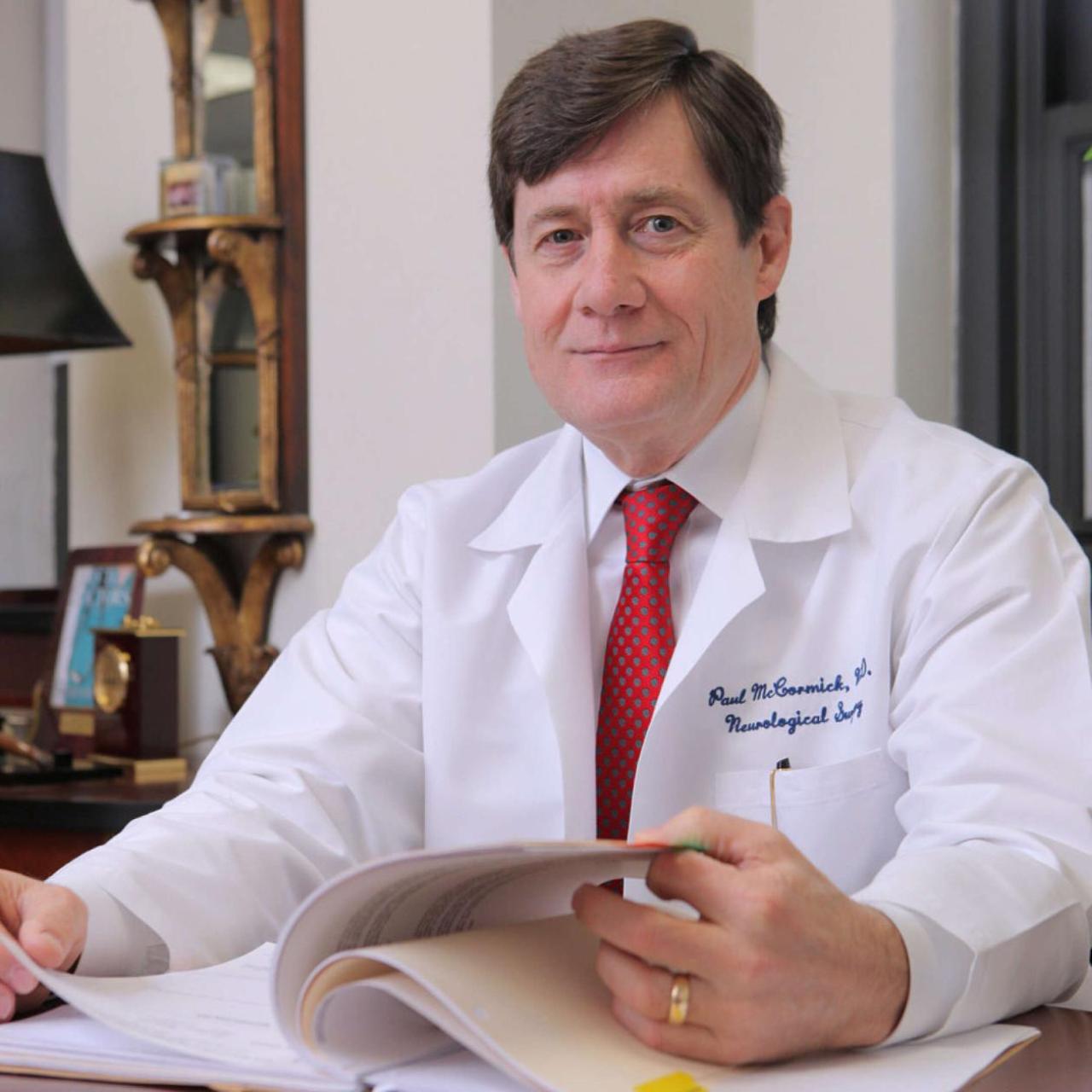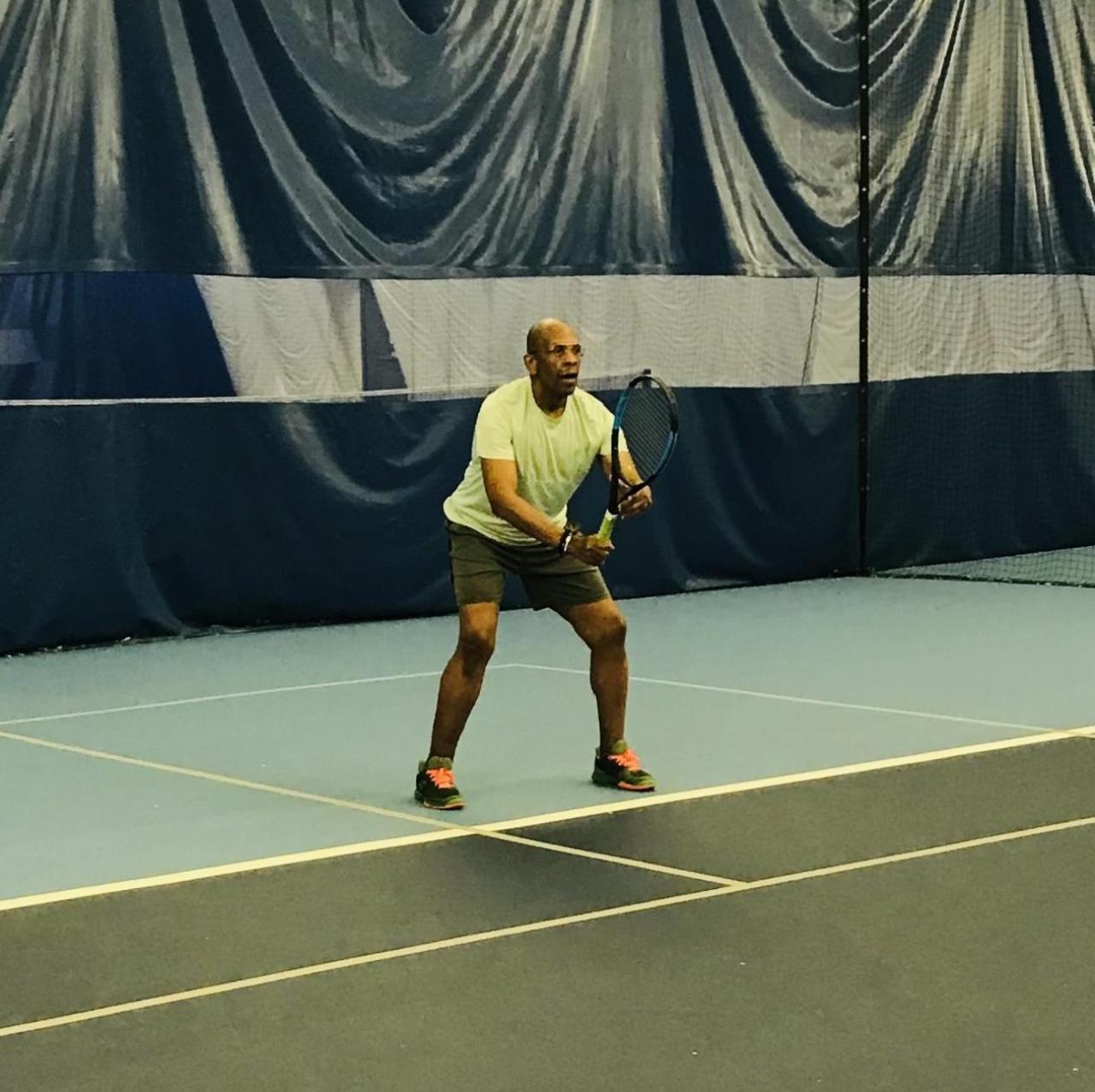In the summer of 2020, Chuck Myers went for a shot on the tennis court and thought he pulled a muscle in his glutes. At first he was able to walk it off, but over time the pain returned when he played-then began interfering with his ability to sit in his home office. Throughout that fall and winter, the pain intensified to the point at which he couldn't sleep for more than two hours each night.
"There was an excruciating throbbing that became debilitating," remembers Myers, 58, a Wall Street banker who at the time was working from his Riverdale home. "Moving around helped but remaining stationary was never a good thing."
"They told me a tumor about the size of a grape was growing on my spine, and that I had to see a neurosurgeon," Myers says. "I was just beside myself."
Myers thought the pain may have to do with a recent treatment for hemorrhoids, but his doctor's office instead suspected sciatica. However, the resulting physical therapy and at-home stretches that Myers tried brought only temporary relief. By spring 2021, the chronic pain and lack of sleep were significantly impacting his job. Finally that July, Myers' doctor sent him for an MRI with contrast, which revealed a very different problem.
"They told me a tumor about the size of a grape was growing on my spine, and that I had to see a neurosurgeon," Myers says. "I was just beside myself."
Myers' tumor, called a schwannoma, measured 1.7 cm by 2.5 cm. It had formed in the spinal canal near his L4 vertebra, which is near the bottom of the lumbar spine.
The first neurosurgeon Myers saw said the growth was likely benign but recommended it be removed as soon as possible. However, Myers was uncomfortable with the demeanor of both the neurosurgeon and his staff, so he began "shopping around" for a specialist he could trust.
Finding the Right Spinal Surgery Team

During a period of researching other neurosurgeons, Myers happened to be driving and spotted a billboard for NewYork-Presbyterian Och Spine. He later picked up New York Magazine's Top Doctors issue and was encouraged to see Paul C. McCormick, MD, Co-Surgeon-In-Chief of NYP Och Spine Hospital and Director of the Spine Hospital at Columbia University Irving Medical Center, featured for spine surgery.
In August 2021, Myers came to Columbia for his first appointment.
"I met Dr. McCormick, I met his staff, and right then and there I knew I was in the right place," says Myers. He appreciated that Dr. McCormick fully explained the composition of the spine, what the tumor was doing, and what to expect from surgery. In addition, his staff communicated with respect, clarity, and professionalism. "It was his quiet confidence, his competence, and the fact that he had zero arrogance and was highly skilled that sold me. I felt like I was speaking with another professional," Myers says.
And Dr. McCormick understood the tough path to diagnosis that Myers had been on. "Nobody thinks having a tumor in their spine is something that is going to happen to them," Dr. McCormick says. "They think they maybe have a pinched nerve or herniated disc, and doctors recommend treating conservatively with therapy and rest."
The surgery date was set for September 10. Myers felt fully prepared by the Columbia team members, who provided clear instructions for before, during, and after the procedure, including YouTube videos and personal calls from Dr. McCormick.
"Dr. McCormick and his staff are my most valuable players of 2021," says Myers. "I'm in awe of that practice-all consummate professionals who made me feel comfortable, relaxed, and secure. I found-in my opinion-the very best neurosurgeon."
The procedure is a multistep, delicate operation, says Dr. McCormick: "We make an incision and remove a small portion of bone to gain access to the inside of the spine. Under a microscope, we carefully move the nerves from the surface of the tumor, shrink the tumor from the inside, detach and remove the rest of the tumor, and put everything back together."

The day of surgery "went like clockwork," says Myers, who then spent three days in the hospital before heading home. Less than two weeks later, he got the great news that the tumor had indeed been benign, and that Dr. McCormick had succeeded in removing all of it. Three months later, Myers was driving again, sleeping well, and back on the tennis court.
"Dr. McCormick and his staff are my most valuable players of 2021," says Myers. "I'm in awe of that practice-all consummate professionals who made me feel comfortable, relaxed, and secure. I found-in my opinion-the very best neurosurgeon."






